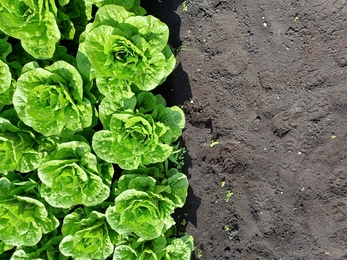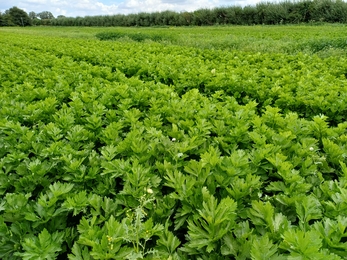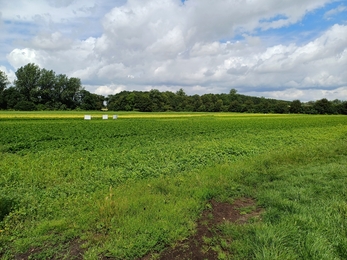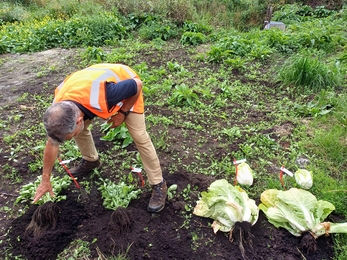I was lucky enough to have an amazing glimpse into the world of food production recently. On a farm visit I learned what one of the UK's biggest salad growers is doing to try and reduce its carbon footprint and protect peat soils. I would recommend to everyone to visit their local farm on an open day because, like the trip to G’s did for me, it might just change your world view.
Amazing Veg and Protecting our Soils
Lettuce growing at G's
There is no doubt that the fenland farms are a powerhouse of food production and a vital part of our economy and daily diet. These farmers are experts at what they do and provide a service that most of us take for granted.
G’s Farms showed us both their business-as-usual operations and the research they are hosting into farming at very high water tables.
In the business-as-usual system on this farm, water tables are held at about 60cm below the surface (already higher than a regular farmed system with overhead watering systems) and the channels under the soil that are usually used to carry water away, are instead filled with water and used to sustain the plants from below. This means lower carbon emissions from the soil and less water needed to support the plants.
The water levels in each field can be carefully controlled to nurture plants whilst growing, but still support machinery when needed for weeding or harvesting. A careful eye is constantly kept on the weather so that when it rains the staff can balance water levels.
This system delivers millions of lettuces a week, celery and all sorts of salads, with crops going from field to delivery lorry in as little as 20 minutes and in store within hours. It is highly efficient and very impressive, made possible by a combination of location, soils and investment from the company. There is much to learn from what they can achieve, and much to understand about how such techniques could work, or be challenging, in other situations.
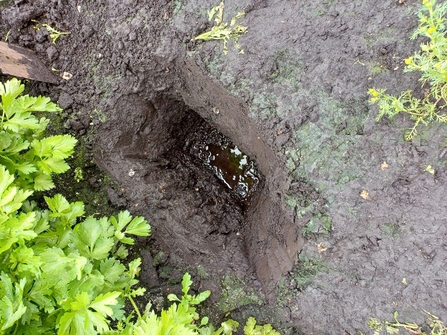
Water level observation hole in G's farm celery field
Wet vegetable conundrum
On a small corner of the farm there is something a bit different underway – an experiment to grow vegetables in a much wetter way – with the water about 10cm below the surface.
This is thought to be the best water level for holding carbon in peat soils – so can this prodigious vegetable producer get crops to grow here?
G’s, together with Fenland SOIL, have crops of celery and Chinese cabbage with very wet feet!
Early observations suggest that root systems develop differently – roots cannot grow in saturated soil as there is no oxygen, so the very wet farmed plants only have access to 10cm of soil. The wet farmed plants have shallow roots so are more vulnerable if water levels drop, the amount of nutrients they can access is also limited to the top 10cm of soil so they exhaust their supply sooner and yield seems like it will be significantly lower.
There were some challenges with using traditional machinery on site too with soil being very soft. Additionally, different crops need to be harvested at different times making it damaging to reduce water levels for harvest.
G's and Fenland SOIL are collaborating with Cranfield University, NIAB, the Centre for Landscape Regeneration and the UK Centre for Ecology & Hydrology, who are providing support in particular with hydrological analysis and biodiversity survey work through the project. We always knew that farming in a different way would present new challenges but it is good to know that industry and conservation are all striving to find solutions.
It was really exciting to visit a working farm and see how our early experiments in high water-level farming have helped to build a much bigger wet farming community which can explore and research a variety of crops and end uses which all complement each other and hopefully will move us towards a new farming industry for the Fens.




